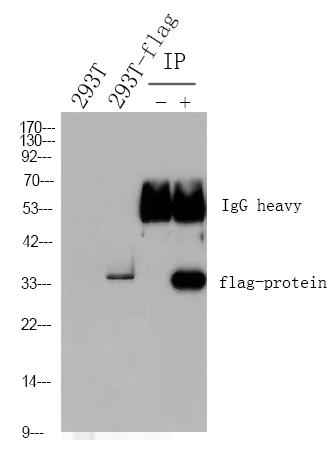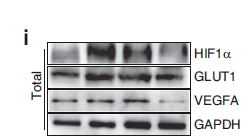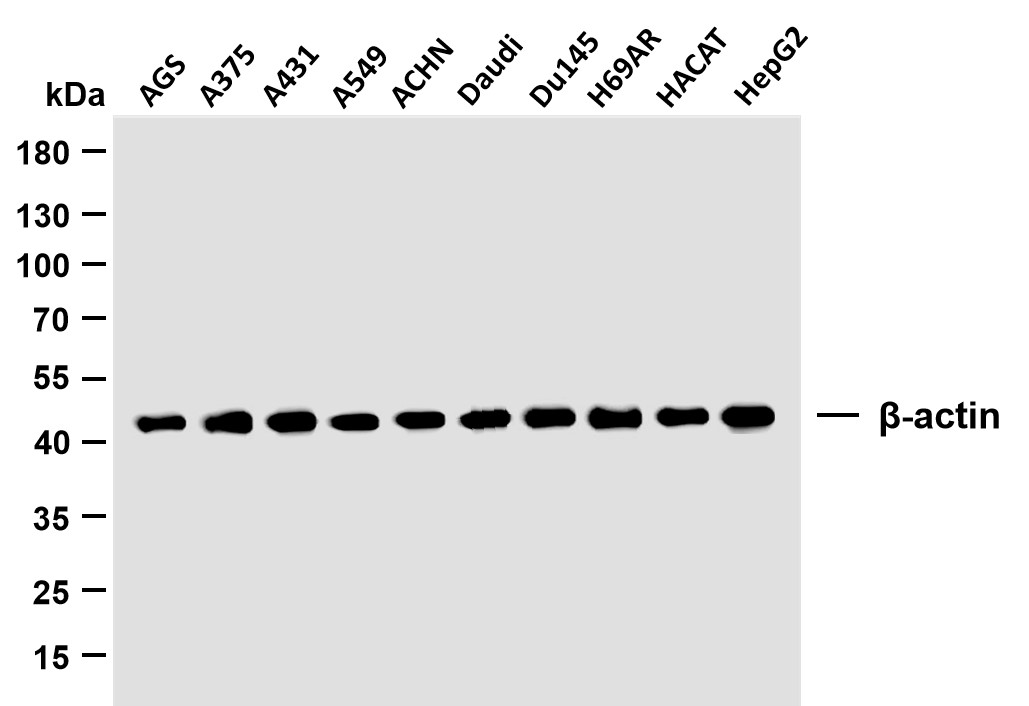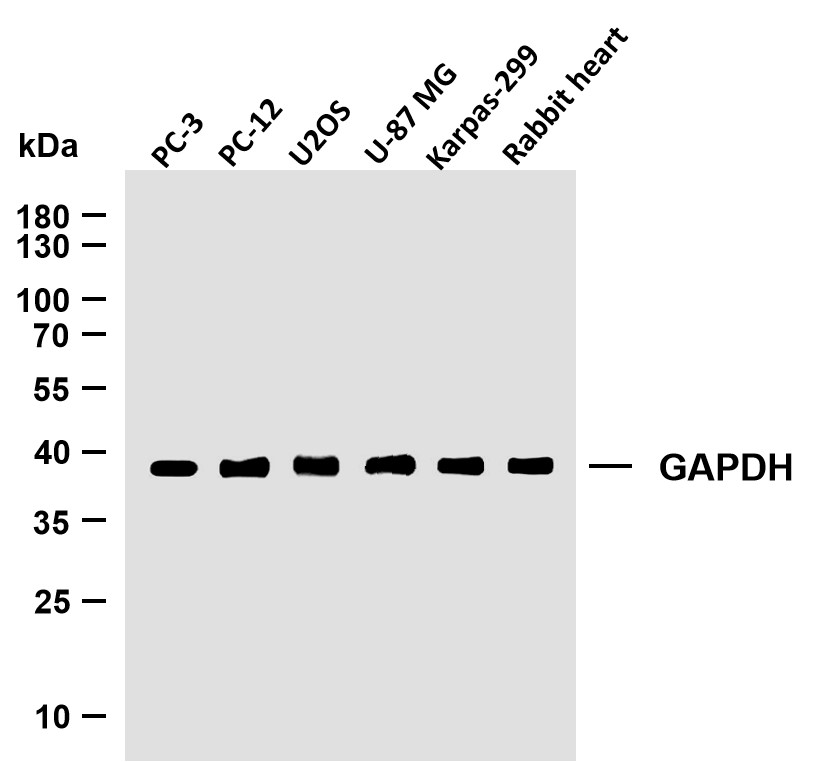
Catalog: YP0173
Size
Price
Status
Qty.
200μL
$600.00
In stock
0
100μL
$340.00
In stock
0
50μL
$190.00
In stock
0
Add to cart


Collected


Collect
Main Information
Target
MEK-6
Host Species
Rabbit
Reactivity
Human, Mouse, Rat
Applications
WB, IHC, IF, ELISA
MW
37kD (Calculated)
Conjugate/Modification
Phospho
Detailed Information
Recommended Dilution Ratio
WB 1:500-1:2000; IHC 1:100-1:300; ELISA 1:40000; IF 1:50-200
Formulation
Liquid in PBS containing 50% glycerol, 0.5% BSA and 0.02% sodium azide.
Specificity
Phospho-MEK-6 (S207) Polyclonal Antibody detects endogenous levels of MEK-6 protein only when phosphorylated at S207.The name of modified sites may be influenced by many factors, such as species (the modified site was not originally found in human samples) and the change of protein sequence (the previous protein sequence is incomplete, and the protein sequence may be prolonged with the development of protein sequencing technology). When naming, we will use the "numbers" in historical reference to keep the sites consistent with the reports. The antibody binds to the following modification sequence (lowercase letters are modification sites):VDsVA
Purification
The antibody was affinity-purified from rabbit antiserum by affinity-chromatography using epitope-specific immunogen.
Storage
-15°C to -25°C/1 year(Do not lower than -25°C)
Concentration
1 mg/ml
MW(Calculated)
37kD
Modification
Phospho
Clonality
Polyclonal
Isotype
IgG
Related Products
Antigen&Target Information
Immunogen:
Synthesized phospho-peptide around the phosphorylation site of human MEK-6 (phospho Ser207)
show all
Specificity:
Phospho-MEK-6 (S207) Polyclonal Antibody detects endogenous levels of MEK-6 protein only when phosphorylated at S207.The name of modified sites may be influenced by many factors, such as species (the modified site was not originally found in human samples) and the change of protein sequence (the previous protein sequence is incomplete, and the protein sequence may be prolonged with the development of protein sequencing technology). When naming, we will use the "numbers" in historical reference to keep the sites consistent with the reports. The antibody binds to the following modification sequence (lowercase letters are modification sites):VDsVA
show all
Gene Name:
MAP2K6
show all
Protein Name:
Dual specificity mitogen-activated protein kinase kinase 6
show all
Other Name:
MAP2K6 ;
MEK6 ;
MKK6 ;
PRKMK6 ;
SKK3 ;
Dual specificity mitogen-activated protein kinase kinase 6 ;
MAP kinase kinase 6 ;
MAPKK 6 ;
MAPK/ERK kinase 6 ;
MEK 6 ;
Stress-activated protein kinase kinase 3 ;
SAPK kinase 3 ;
SAPKK-3 ;
SAPKK3
MEK6 ;
MKK6 ;
PRKMK6 ;
SKK3 ;
Dual specificity mitogen-activated protein kinase kinase 6 ;
MAP kinase kinase 6 ;
MAPKK 6 ;
MAPK/ERK kinase 6 ;
MEK 6 ;
Stress-activated protein kinase kinase 3 ;
SAPK kinase 3 ;
SAPKK-3 ;
SAPKK3
show all
Background:
This gene encodes a member of the dual specificity protein kinase family, which functions as a mitogen-activated protein (MAP) kinase kinase. MAP kinases, also known as extracellular signal-regulated kinases (ERKs), act as an integration point for multiple biochemical signals. This protein phosphorylates and activates p38 MAP kinase in response to inflammatory cytokines or environmental stress. As an essential component of p38 MAP kinase mediated signal transduction pathway, this gene is involved in many cellular processes such as stress induced cell cycle arrest, transcription activation and apoptosis. [provided by RefSeq, Jul 2008],
show all
Function:
Catalytic activity:ATP + a protein = ADP + a phosphoprotein.,enzyme regulation:Probably activated by dual phosphorylation on Ser-207 and Thr-211.,Function:Catalyzes the concomitant phosphorylation of a threonine and a tyrosine residue in MAP kinase p38 exclusively.,induction:Strongly activated by UV, anisomycin, and osmotic shock but not by phorbol esters, NGF or EGF.,PTM:Acetylation of Ser-207 and Thr-211 by Yersinia yopJ prevents phosphorylation and activation, thus blocking the MAPK signaling pathway.,PTM:Weakly autophosphorylated.,similarity:Belongs to the protein kinase superfamily.,similarity:Belongs to the protein kinase superfamily. STE Ser/Thr protein kinase family. MAP kinase kinase subfamily.,similarity:Contains 1 protein kinase domain.,subunit:Interacts with Yersinia yopJ.,tissue specificity:Isoform 2 is only expressed in skeletal muscle. Isoform 1, on the other hand, is found in skeletal muscle, heart, and in lesser extent in liver or pancreas.,
show all
Cellular Localization:
Nucleus . Cytoplasm . Cytoplasm, cytoskeleton . Binds to microtubules.
show all
Tissue Expression:
Isoform 2 is only expressed in skeletal muscle. Isoform 1 is expressed in skeletal muscle, heart, and in lesser extent in liver or pancreas.
show all
Research Areas:
>>MAPK signaling pathway ;
>>Rap1 signaling pathway ;
>>Cellular senescence ;
>>Osteoclast differentiation ;
>>Toll-like receptor signaling pathway ;
>>Fc epsilon RI signaling pathway ;
>>TNF signaling pathway ;
>>Inflammatory mediator regulation of TRP channels ;
>>GnRH signaling pathway ;
>>Growth hormone synthesis, secretion and action ;
>>Alcoholic liver disease ;
>>Amyotrophic lateral sclerosis ;
>>Pathways of neurodegeneration - multiple diseases ;
>>Salmonella infection ;
>>Yersinia infection ;
>>Toxoplasmosis ;
>>Hepatitis B ;
>>Human cytomegalovirus infection ;
>>Kaposi sarcoma-associated herpesvirus infection ;
>>Epstein-Barr virus infection ;
>>Human immunodeficiency virus 1 infection ;
>>PD-L1 expression and PD-1 checkpoint pathway in cancer ;
>>Lipid and atherosclerosis ;
>>Fluid shear stress and atherosclerosis
>>Rap1 signaling pathway ;
>>Cellular senescence ;
>>Osteoclast differentiation ;
>>Toll-like receptor signaling pathway ;
>>Fc epsilon RI signaling pathway ;
>>TNF signaling pathway ;
>>Inflammatory mediator regulation of TRP channels ;
>>GnRH signaling pathway ;
>>Growth hormone synthesis, secretion and action ;
>>Alcoholic liver disease ;
>>Amyotrophic lateral sclerosis ;
>>Pathways of neurodegeneration - multiple diseases ;
>>Salmonella infection ;
>>Yersinia infection ;
>>Toxoplasmosis ;
>>Hepatitis B ;
>>Human cytomegalovirus infection ;
>>Kaposi sarcoma-associated herpesvirus infection ;
>>Epstein-Barr virus infection ;
>>Human immunodeficiency virus 1 infection ;
>>PD-L1 expression and PD-1 checkpoint pathway in cancer ;
>>Lipid and atherosclerosis ;
>>Fluid shear stress and atherosclerosis
show all
Signaling Pathway
Cellular Processes >> Cell growth and death >> Cellular senescence
Organismal Systems >> Immune system >> Toll-like receptor signaling pathway
Organismal Systems >> Immune system >> Fc epsilon RI signaling pathway
Organismal Systems >> Endocrine system >> GnRH signaling pathway
Organismal Systems >> Endocrine system >> Growth hormone synthesis, secretion and action
Organismal Systems >> Sensory system >> Inflammatory mediator regulation of TRP channels
Organismal Systems >> Development and regeneration >> Osteoclast differentiation
Human Diseases >> Cancer: overview >> PD-L1 expression and PD-1 checkpoint pathway in cancer
Human Diseases >> Neurodegenerative disease >> Amyotrophic lateral sclerosis
Human Diseases >> Neurodegenerative disease >> Pathways of neurodegeneration - multiple diseases
Environmental Information Processing >> Signal transduction >> MAPK signaling pathway
Environmental Information Processing >> Signal transduction >> Rap1 signaling pathway
Environmental Information Processing >> Signal transduction >> TNF signaling pathway
Reference Citation({{totalcount}})
Catalog: YP0173
Size
Price
Status
Qty.
200μL
$600.00
In stock
0
100μL
$340.00
In stock
0
50μL
$190.00
In stock
0
Add to cart


Collected


Collect
Recently Viewed Products
Clear allPRODUCTS
CUSTOMIZED
ABOUT US
Toggle night Mode
{{pinfoXq.title || ''}}
Catalog: {{pinfoXq.catalog || ''}}
Filter:
All
{{item.name}}
{{pinfo.title}}
-{{pinfo.catalog}}
Main Information
Target
{{pinfo.target}}
Reactivity
{{pinfo.react}}
Applications
{{pinfo.applicat}}
Conjugate/Modification
{{pinfo.coupling}}/{{pinfo.modific}}
MW (kDa)
{{pinfo.mwcalc}}
Host Species
{{pinfo.hostspec}}
Isotype
{{pinfo.isotype}}
Product {{index}}/{{pcount}}
Prev
Next
{{pvTitle}}
Scroll wheel zooms the picture
{{pvDescr}}




















